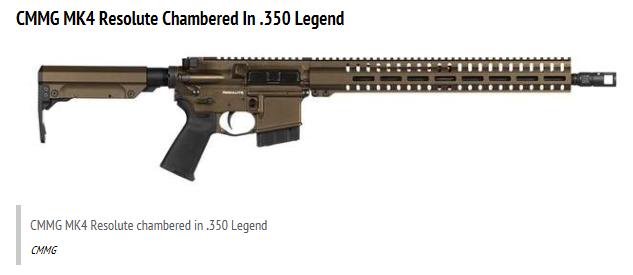Joe Scarorough:
As a longtime gun owner and supporter of the Second Amendment, I agreed with the Supreme Court’s “Heller” holding that concluded Americans had the right to keep and bear arms. But that constitutional protection did not, and will not, extend to guns designed as weapons of war.
One should expect such things from a mindless dolt like Scarborough, but we should be able to expect better from people who should know better. Apparently, it has become all the rage to throw around a few gun words and argue that the AR-15 isn’t a weapon of war, and thus it is protected under the 2nd amendment.
This means that in both the ammunition it fires and the rate at which it fires, the AR-15 is more akin to the famous Ruger Mini14 ranch rifle than the M4 carbine, which is what’s been putting rounds downrange for the Department of Defense since 1994. No AR-15 marketed for civilian use is an automatic rifle.
If you want to legally purchase an automatic firearm made before 1986, there are a ton of prohibitive bureaucratic hoops you have to jump through (plus, they’re incredibly expensive because of the 1986 ban). If you want to buy one made after 1986, you either need to be a law enforcement officer with a reason to have it or a Federal Firearms Licensee (FFL).
[ … ]
The fact that so many prominent anti-gun people think that the modern sporting rifle available to civilian purchasers today is a weapon that is used or even proposed for use in combat just shows how little they understand about guns. And if you’re going to try to ban something or criminalize people’s legally purchased property, you’d better at least have your facts straight about it.
Yea, and I believe allegedly pro-gun people should get their facts straight too.
We’ve discussed this before, but it bears repeating. Every weapon is a weapon of war. That is it’s purpose. The U.S. Marines used shotguns to clear rooms in Now Zad, Afghanistan. Carlos Hathcock used a Winchester Model 70 30-06 rifle for his kills in Vietnam, at least most of them. That tradition carried through to the early stages of OIF, where Marines were still using bolt action Winchester Model 70s.
Virtually every sniper rifle today is a bolt action rifle, and even the DM (designated marksman) rifles aren’t fully automatic. That wouldn’t benefit the DM. My own son, while running the SAW in Iraq, conducted room clearing in Fallujah with an M4, and he informed me that they never had their rifles in full-auto mode of fire (3-round burst). Semi-automatic firearms are weapons of war. It’s nonsense to argue that since an AR-15 isn’t fully automatic it isn’t a weapon of war.
Revolvers were used in WWI, WWII, the Korean War, and in fact even in Vietnam (for chasing tunnel rats). The venerable 1911 – which I prefer over any other pistol – doesn’t have a high capacity magazine, and yet it was a weapon of war, and is still on the battlefield today. Knives are weapons of war, and my son carried one with him all the time in Iraq.
Bows and arrows were weapons of war, as were crossbows. Before that, sticks and rocks were weapons of war. In short, every weapon ever invented or used by mankind for any purpose whatsoever has been a weapon of war, and may continue to be so to this very day.
The strategy to frame our right to ownership of weapons in hunting and target shooting is a tip of the hat to the “sporting purposes test,” an acquiescence to the abomination of the Gun Control Act of 1968. It has nothing whatsoever to do with the second amendment, any more than personal self defense has anything to do with what the framers of the constitution wrote or intended.
The second amendment pertains exclusively to the amelioration of tyranny. The second amendment assures weapons of war will be available in order to enable the citizenry to fight warfare. As to the real basis for our right to ownership of weapons, one need only to ponder what God thinks about gun control.
The Bible does contain a few direct references to weapons control. There were many times throughout Israel’s history that it rebelled against God (in fact, it happened all the time). To mock His people back into submission to His Law, the Lord would often use wicked neighbors to punish Israel’s rebellion. Most notable were the Philistines and the Babylonians. 1 Samuel 13:19-22 relates the story: “Not a blacksmith could be found in the whole land of Israel, because the Philistines had said, “Otherwise the Hebrews will make swords or spears!” So all Israel went down to the Philistines to have their plowshares, mattocks, axes, and sickles sharpened…So on the day of battle not a soldier with Saul and Jonathan had a sword or spear in this hand; only Saul and his son Jonathan had them.” Nebuchadnezzar king of Babylon also removed all of the craftsmen from Israel during the Babylonian captivity (2 Kings 24:14). Both of these administrations were considered exceedingly wicked including their acts of weapons control.
Stop worrying over whether an AR-15 is a “weapon of war.” Every weapon is a weapon of war, and God says we have a right to them. When you argue in such a way, you cede ground to the enemy because you assume the validity and truthfulness of his value judgments, definitions and categories.




